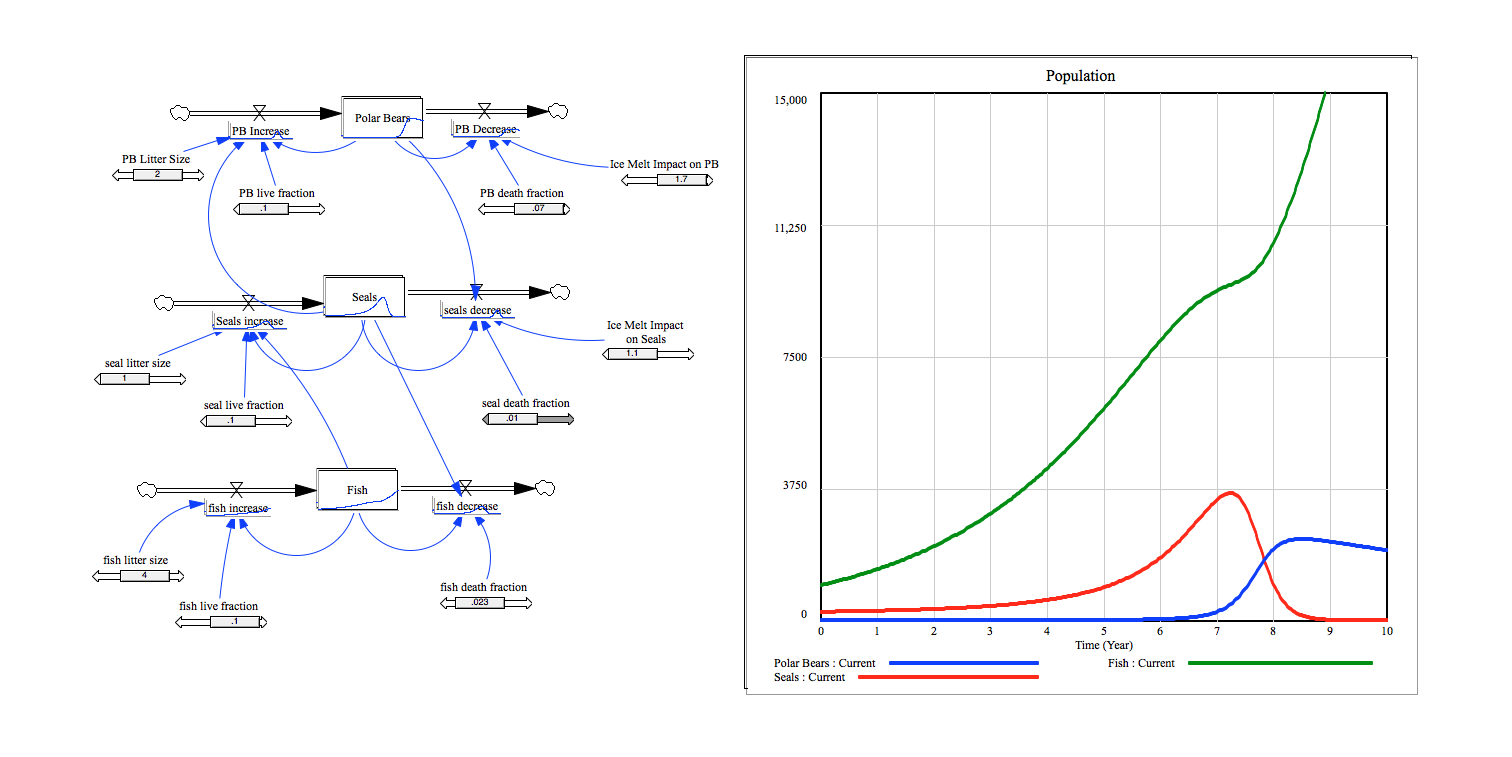Description of Project
Our project simulates an arctic environment in Alaska with populations of polar bears, seals, and fish that make up a food chain. The populations are interdependent on each other because polar bears eat seals and seals eat fish. We also factored in the impact of melting sea ice into that decreases the polar bear and seal populations. Because the populations are interdependent, changes in one population affects the growth and death rates of the the other two as well. For example, the number of polar bears affects the decrease in seal population and the number of seals affects the increase of polar bear population.
Before even making any of the system or agent models, we first planned and thought how the models were supposed to act. Since the populations were interdependent, on the VenSIM model graph we would be looking for increases/decreases in one population (represented by the curve) leading to increases in decreases in another population (represented by a different curve). On the AgentCubes model we would be looking for the different agents eating each other, the ice melting, and the agents reproducing between themselves.


Model at Different Scales
In VenSIM, the main way we used and changed the scales of the world was through decreasing the number of seals, polar bears, and fish in a proportional manner. That's because we originally had all of the numbers as they were in real life, but since the values were way too big VenSIM kept on crashing and wasn't able to run through the entire simulation. A second way we changed the scale in VenSIM was through decreasing the time step. This change greatly smoothed out our graph; before it was spiking all over the place at the slightest change in a slider bar, afterwards the value changes were much more gradual and controlled.
In AgentCubes, the main way we used and changed the scales of the world was through creating multiple worlds, each with a different size and number of polar bears, seals, and fish. Originally, we started out with just one small world with all three agents. The small scale made it easy to see how all of the agents behaved and interacted with each other, but it was too small and was not able to sustain itself for an extended period of time. Next, we made a bunch of mini worlds for each of the agents specifically. This let us go more in depth towards seeing how each individual agent behaved in the world. Finally, we once again used all three agents and put them in a much larger world than the first one, and this is where we were able to make most of the observations towards how the model ran.